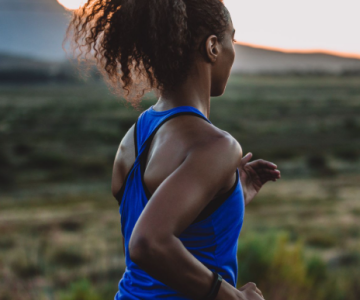When gearing up for your next hike, selecting the right backpack is crucial. Whether you’re a seasoned hiker or just starting out, the fit, volume, and features of your backpack can significantly impact your comfort and performance on the trail. This guide covers the key factors to consider when choosing a pack, helping you make an informed decision for your next outdoor adventure.
Traditional vs. Ultralight Backpacks
Backpacks have evolved over the years, with advancements in materials and design enabling lighter, more compact options. Traditional packs tend to be more feature-rich, providing ample storage, organizational compartments, and added comfort features. In contrast, ultralight backpacks focus on minimizing weight, stripping away non-essential elements to create a lighter pack.
What’s the Difference?
Ultralight packs, such as the Zpacks Nero, are designed for hikers looking to minimize weight. These packs typically forgo features like a sleeping bag compartment, compression straps, and tool attachment points, opting instead for lightweight materials and a minimal design. On the other hand, traditional packs tend to have more volume and additional features that some hikers might find essential for comfort and convenience.
Ultralight packs are ideal for short, fast hikes with a light load, especially if you’re willing to sacrifice some comfort for weight savings. However, if you’re carrying a heavier load or need more volume, a traditional pack may be more suitable.
When to Choose a Traditional Pack
Ultralight backpacks are great for minimalist adventurers who prioritize speed and efficiency. However, these packs are best for loads under 20 pounds. If your gear exceeds that weight, you may need a traditional pack with a more supportive hip belt and better load distribution. For larger volumes or heavier gear, traditional packs with added features, such as a frame or padded compartments, will be a better fit.
Volume: How Much Space Do You Need?
Choosing the right volume for your backpack is one of the most critical decisions you’ll make. The pack’s volume determines how much gear you can carry, which impacts your comfort and the overall weight of your load.
Factors to Consider:
- Food, Water, and Fuel: The longer your hike, the more supplies you need to carry. For long trips between resupplies, you’ll need more storage space to accommodate food and water. A multi-day hike in a remote area will require a larger pack, while shorter trips can get by with a smaller one.
- Weather Gear: For trips in colder or wetter conditions, you’ll need additional layers and gear. This increases the bulk of your pack, so it’s important to factor this in when choosing your pack size.
- Shelter and Sleep System: A sleeping bag and tent (or shelter) make up a significant portion of your pack’s weight. Lightweight shelters like tarps are ideal for ultralight packing, while freestanding tents offer more protection but add more weight.
Recommended Pack Volumes by Trip Type
- Weekend Ultralight Backpacking (Summer): A pack with 30-40 liters will usually suffice for experienced hikers carrying a base weight under 10 pounds. When including food and water, the total weight should still be under 20 pounds.
- 5-Day Ultralight Backpacking (Winter): For colder conditions, a 45-60 liter pack will provide enough space to carry additional gear like a warmer sleeping bag and layers for 3-season or winter weather. Expect a total pack weight of around 30 pounds.
- Weekend Backpacking (Summer): A 40-55 liter pack is ideal for those who prefer a bit more comfort and want to carry extra gear, such as a larger tent or thicker sleeping bag. A pack of this size can handle a base weight of around 20 pounds.
- 7-Day Backpacking (Winter): For a longer trip in colder conditions, you’ll need a pack with a capacity of 60-80 liters. This pack will accommodate extra layers, sleeping gear, and food, bringing the total weight to around 40 pounds.
Features to Look for in a Backpack
Backpacks come with a range of features designed to improve comfort and usability. Here are the main features to consider when selecting your next pack.
Frame and Suspension System
Most backpacks have an internal frame to help distribute the weight evenly across your body. Some ultralight packs lack frames, which is fine for lighter loads but can cause discomfort with heavier packs. Traditional packs use framesheets or stays made from carbon or aluminum to add rigidity and support.
Hip Belt
For heavier loads, a well-padded and properly shaped hip belt is essential. It helps carry up to 80% of the pack’s weight, reducing strain on your shoulders and back. If you plan to carry a lighter load, you can opt for a pack with a less padded hip belt.
Shoulder Straps
Shoulder straps should be comfortable and fit well, as they help distribute the weight evenly. They don’t need to be as padded as the hip belt but should have enough padding to prevent discomfort or chafing.
Ventilation
Backpacks with a suspended mesh back panel or ventilation channels help reduce sweating and improve airflow, making them more comfortable for long hikes. However, ultralight packs often lack these features in favor of reducing weight.
Women’s Packs
Women’s backpacks are designed with specific features to accommodate a woman’s body. These packs typically have shorter torso lengths and a more contoured hip belt. They are also smaller in volume, offering better fitting and support for women who carry lighter gear or have smaller frames.
Finding the Right Fit
To ensure your backpack fits properly, focus on the torso length and hip belt. The torso length refers to the distance between the top of your shoulder straps and your hip belt. Make sure the hip belt fits snugly around your hips to provide optimal weight distribution.
Conclusion
Selecting the right backpack is an essential part of planning for your next adventure. Whether you choose an ultralight or traditional pack depends on your personal needs, trip length, and the type of terrain you’ll encounter. Consider volume, fit, and the features that align with your hiking style, and you’ll be well on your way to finding the perfect pack.





